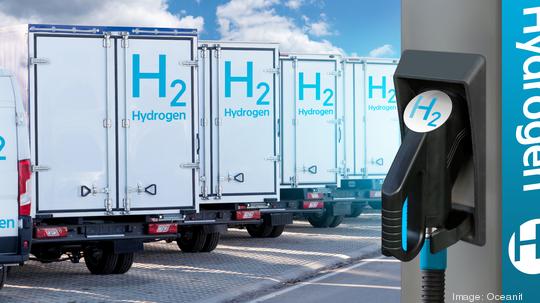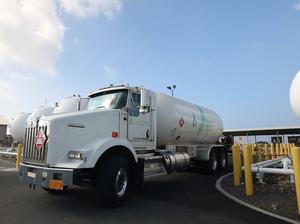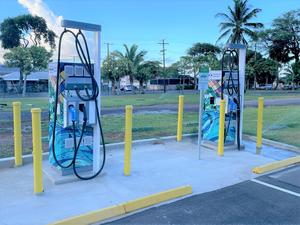
Local tech company Oceanit and the state’s largest propane distributor, Hawaii Gas, are partnering in collaboration with the U.S. Department of Energy to pilot new technology for transporting hydrogen through natural gas infrastructure, the companies announced in a joint statement on Sept. 22.
Oceanit's HydroPel technology is a nanocomposite surface treatment that can be applied to existing steel pipeline infrastructure to remove the risk of hydrogen embrittlement failure, as well as decrease operating costs, according to Oceanit. Moving hydrogen through pre-existing infrastructure has risks. Hydrogen embrittlement, which occurs when hydrogen's molecules penetrate metals, is an issue for steel pipelines operating at high pressures.
Hawaii Gas operates its pipelines at low enough pressures where hydrogen embrittlement is not a threat. The company already currently mixes about 10-12% hydrogen with natural gas in its 1,100 miles of pipeline, according to Hawaii Gas Vice President of Operations Kevin M. Nishimura. It can safely accommodate up to 15% hydrogen in its pipelines.
"The partnership with Oceanit has to do with new technology for transforming pipelines that carry natural gas right now, to be better prepared for carrying a blend of natural gas and hydrogen," Nishimura told Pacific Business News. "The reason Oceanit is partnering with Hawaii Gas is because we've been the only utility in the country to blend hydrogen with natural gas for utility gas distribution for almost 50 years now.

"There are a lot of companies on the Mainland interested in doing this, so Oceanit saw it as a good opportunity to work with us on something we've been doing for a long time with the technology they've developed," he said. "... We can use our pipe as an experiment for their new technology."
The new HydroPel technology works by creating a nano-protective barrier on the pipe interior to shield against hydrogen penetration, and by also creating an omniphobic “ultra-slick” surface that has the added benefit of drag reduction, which reduces the cost of compressing and transporting hydrogen gas, according to Oceanit.
"If you look at energy transformation, it's going to happen in steps. So we try to look at what we can do that will have an impact and can be executed now," Oceanit President and CEO Patrick Sullivan told PBN. "... Hydrogen is a great fuel that could replace petroleum at some point — it can be transported, it can be used in big systems, it can be used in industrial processes — it has all kinds of potential."
The United States has nearly 3 million miles of natural gas pipeline. The use of hydrogen could help decarbonize industries that are difficult to electrify, such as forms of transportation and carbon-intensive steelmaking. Oceanit said transporting hydrogen through existing natural gas infrastructure is considered the most efficient and economical path toward adoption.
"This is an initiative and research project that involves two local Hawaii companies — and I think this puts us on the map," Nishimura said. "There's so much interest around the country, and even around the world now, to move toward carbon neutrality, and blending hydrogen to offset natural gas is one way to do it."






